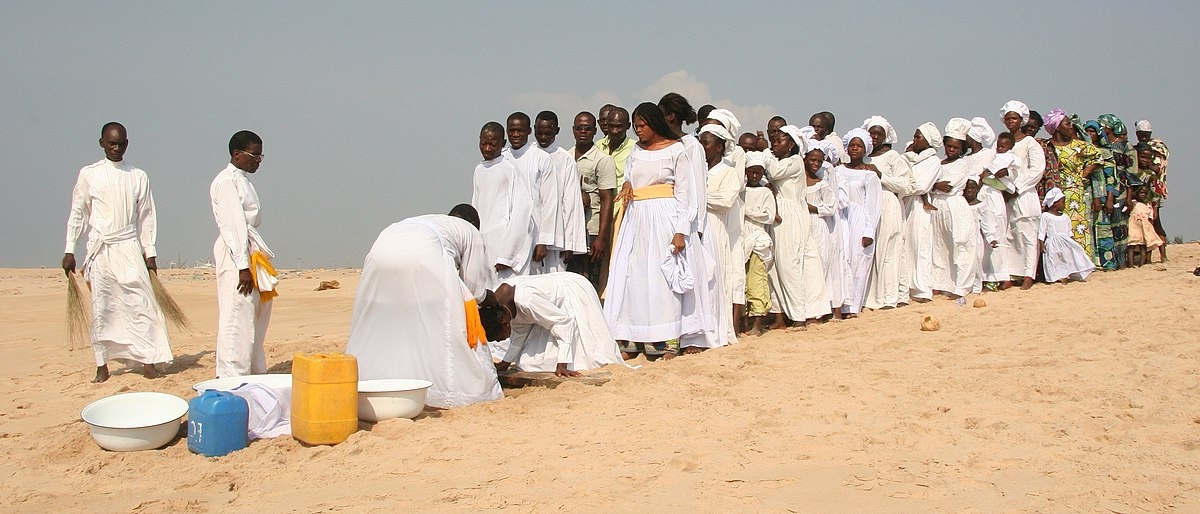
Aladura churches, known for their unique blend of Christianity and African traditions, have a rich history and vibrant practices. Originating in Nigeria in the early 20th century, these churches emphasize prayer, healing, and prophecy. Aladura means "owners of prayer" in Yoruba, highlighting their focus on spiritual communication. These churches emerged as a response to colonial-era missionary efforts, blending indigenous beliefs with Christian teachings. They often feature lively worship services, prophetic declarations, and faith healing. With millions of followers across Africa and beyond, Aladura churches continue to grow, offering a distinct spiritual experience that resonates deeply with many. Curious about their fascinating journey and practices? Dive into these 34 intriguing facts about Aladura churches!
Origins of Aladura
The Aladura movement is a fascinating blend of Christianity and indigenous African beliefs. It emerged in the early 20th century and has since grown into a significant religious force in West Africa.
- The Aladura movement began in Nigeria during the 1910s.
- The term "Aladura" means "owners of prayer" in Yoruba.
- The movement was a response to the influenza pandemic of 1918, which led many to seek divine healing.
- Aladura churches emphasize the power of prayer and faith healing.
- The movement was influenced by the teachings of the Faith Tabernacle Church in Philadelphia, USA.
Key Figures in Aladura
Several key figures played pivotal roles in the development and spread of the Aladura movement. Their leadership and vision helped shape the movement into what it is today.
- Joseph Shadare is considered one of the founders of the Aladura movement.
- Moses Orimolade Tunolase, another key figure, founded the Cherubim and Seraphim Church in 1925.
- Captain Abiodun Emmanuel, a former soldier, was instrumental in the spread of the movement.
- Sophia Odunlami, a nurse, was a prominent female leader in the early days of the movement.
- The movement also drew inspiration from the teachings of William Wade Harris, a Liberian evangelist.
Beliefs and Practices
The beliefs and practices of the Aladura movement are a unique blend of Christianity and traditional African spirituality. These elements make the movement distinct and appealing to many followers.
- Aladura churches believe in the power of prayer to heal sickness and solve problems.
- They practice faith healing, often holding special healing services.
- Members are encouraged to fast and pray regularly.
- The movement places a strong emphasis on visions and dreams as divine messages.
- Aladura churches often use holy water and anointing oil in their rituals.
Growth and Expansion
The Aladura movement has experienced significant growth and expansion since its inception. It has spread beyond Nigeria to other parts of Africa and the world.
- The movement spread to Ghana in the 1920s.
- Aladura churches can now be found in countries like Sierra Leone, Liberia, and Togo.
- The movement has also reached the United Kingdom and the United States.
- The Christ Apostolic Church, one of the largest Aladura denominations, was founded in 1941.
- The Celestial Church of Christ, another major Aladura denomination, was founded in 1947.
Cultural Impact
The Aladura movement has had a significant cultural impact, influencing various aspects of life in the communities where it is present.
- Aladura churches often incorporate traditional African music and dance into their worship services.
- The movement has influenced the development of gospel music in West Africa.
- Aladura churches often serve as community centers, providing social and economic support to their members.
- The movement has played a role in promoting education, with many churches establishing schools.
- Aladura churches have also been involved in various social justice initiatives.
Challenges and Criticisms
Like any religious movement, the Aladura movement has faced its share of challenges and criticisms. These issues have shaped the movement's development and response to external pressures.
- Some critics argue that the movement's emphasis on faith healing can discourage people from seeking medical treatment.
- The movement has faced opposition from traditional African religious leaders.
- There have been internal conflicts and schisms within the movement.
- Some Aladura churches have been criticized for their financial practices.
- The movement has also faced challenges in adapting to modern societal changes.
Modern-Day Aladura
Today, the Aladura movement continues to evolve and adapt to the changing world. It remains a vibrant and influential religious force.
- Many Aladura churches have embraced modern technology, using social media and online platforms to reach followers.
- The movement continues to attract new members, particularly among the youth.
- Aladura churches are involved in various charitable activities, providing support to the needy.
- The movement remains committed to its core beliefs in the power of prayer and faith healing.
Final Thoughts on Aladura
Aladura churches have a rich history and unique practices that set them apart. Their emphasis on prayer, healing, and prophecy offers a distinct spiritual experience. Originating in Nigeria during the early 20th century, these churches have grown significantly, spreading their influence globally. Their blend of Christian beliefs with African traditions creates a vibrant and dynamic form of worship. Understanding Aladura churches provides insight into a fascinating aspect of religious diversity. Whether you're interested in their history, practices, or global impact, there's much to learn and appreciate. So, next time you hear about Aladura, you'll know it's more than just a name—it's a movement with deep roots and a bright future.
Was this page helpful?
Our commitment to delivering trustworthy and engaging content is at the heart of what we do. Each fact on our site is contributed by real users like you, bringing a wealth of diverse insights and information. To ensure the highest standards of accuracy and reliability, our dedicated editors meticulously review each submission. This process guarantees that the facts we share are not only fascinating but also credible. Trust in our commitment to quality and authenticity as you explore and learn with us.
